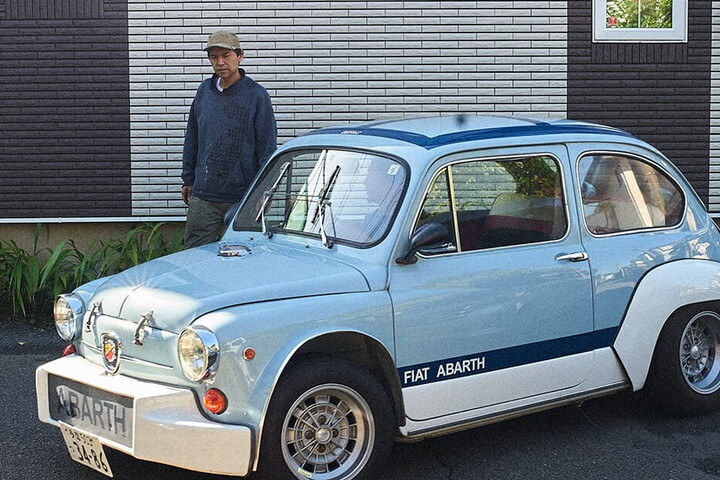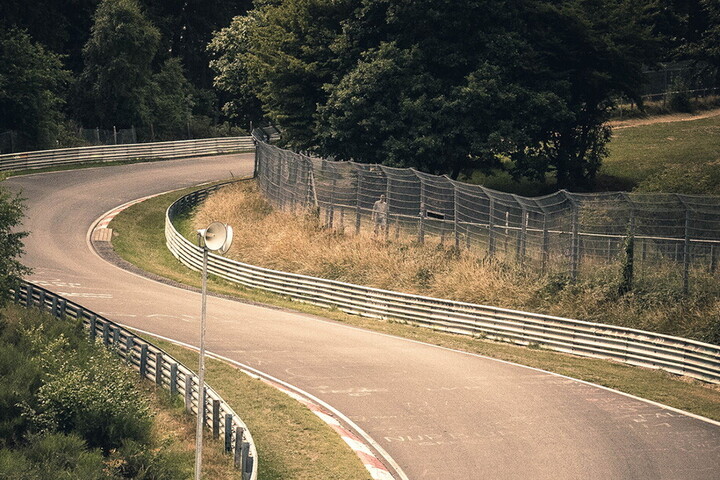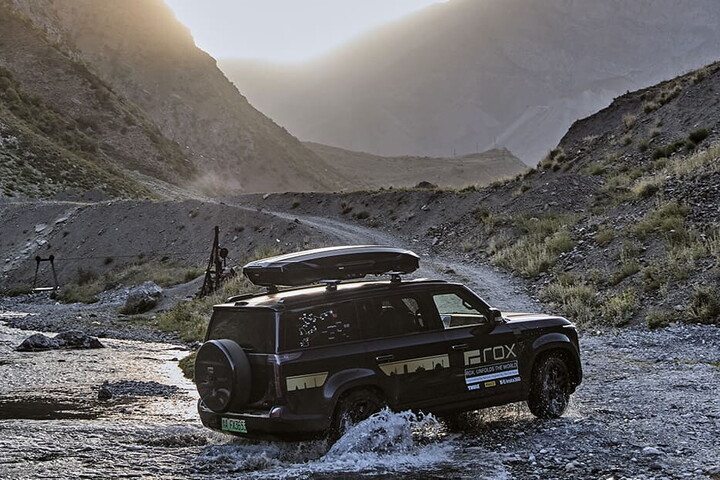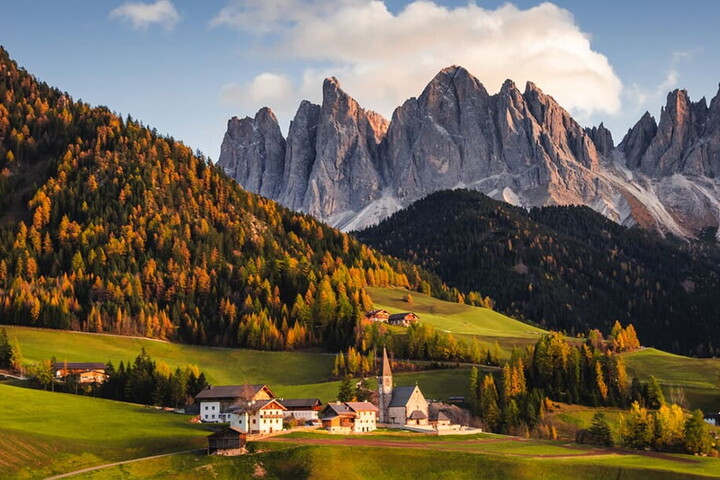The French painter Eugène Boudin, Claude Monet's mentor, once said he spent his entire life trying to paint the sky of Normandy. And when you set off for this historic French region, it's not hard to see why: the weather conditions, as well as the light that defines them, are constantly changing. This characteristic is also reflected in the landscape, which constantly transforms after every bend or from one village to another, making the journey a continuous discovery.
Normandy is a mesmerising destination in every season, with landscapes that change their appearance but never cease to amaze. To best tackle French roads in different times of the year, it's essential to choose tyres suitable for the weather conditions and your driving style.
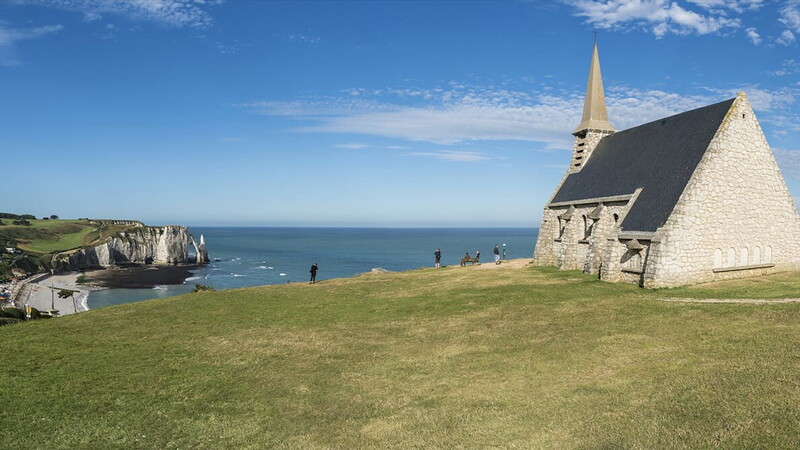
In summer, those travelling with sports cars or high-end vehicles can rely on specialised products like the new Pirelli P Zero. An Ultra-High Performance tyre and an icon of Pirelli's technological innovation, it combines high performance with safety, making it perfect for enjoying panoramic curves overlooking the Atlantic or the roads that wind through the villages of Calvados, thanks to its excellent handling and reduced braking distances, even on wet surfaces. For saloons and CUVs, the new generation of Pirelli Cinturato tyres sets a benchmark, thanks to its balance of efficiency, comfort, and reliability. Its braking performance on both dry and wet surfaces has been top-rated in external tests, while still maintaining excellent mileage.
Embarking on a road trip with specialised tyres means travelling safely and with maximum driving pleasure, even in winter. For those who love snowy landscapes, the P Zero Winter 2 is Pirelli's most advanced offering. Chosen by leading car manufacturers world-wide as original winter equipment, it provides excellent wet grip (Class A on the European label) and optimal braking performance even on snow.
For drivers who never stop and are ready to go regardless of the season, Pirelli offers its All Season range, completely renewed this year. These tyres feature the 3PMSF marking, certifying their reliability even in low temperatures after rigorous testing in all conditions. Among the highlights is the Cinturato All Season SF3, ideal for consistent year-round control, certified by the TÜV SÜD Performance Mark quality seal. Specifically designed for SUVs, the Scorpion All Season SF3 adapts the Cinturato's qualities to the needs of high-riding vehicles.
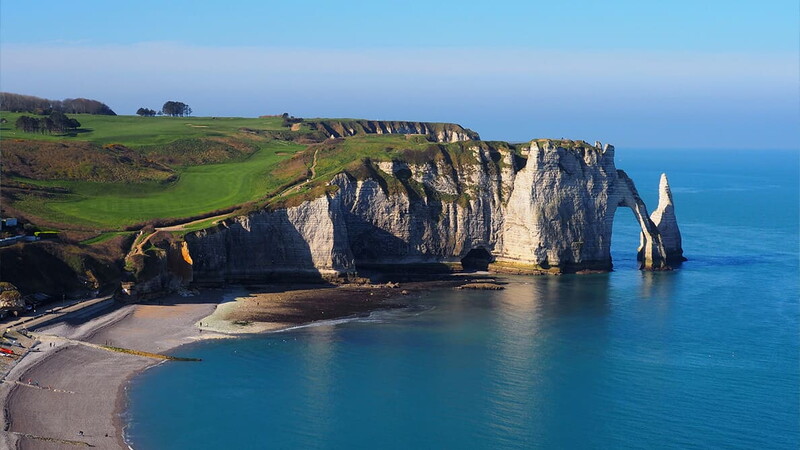
There are several options for reaching Normandy. You can start from Italy, choosing to break the journey into several stages to avoid covering too many kilometres in a day. Alternatively, you can fly to France and rent a car from your arrival airport. Choose one that suits your needs, but most importantly, one that has good road holding in specific weather conditions and ensures comfort even for particularly long stretches. The variety of landscapes, traditions, food and wine, and rich history of this region offer the chance to organise various itineraries, which can be tailored to your interests and the time you have available.
This part of France is closely tied to the events of World War II, and by choosing to drive the 130 kilometres that separate Caen from Sainte-Mère-Église, you can relive the history of the Normandy landings. In Caen, you'll find the Caen Memorial Museum, a museum and cultural centre dedicated to 20th-Century history with a large section on the Second World War. Continuing along this route, you can visit all the beaches involved in D-Day: from Omaha Beach where Robert Capa's iconic photo of the landing was taken, to Juno and Sword Beach, reached by Canadian and British forces. In Sainte-Mère-Église, the first liberated village, you might find yourself drawn to the paratrooper hanging from the church steeple. This is a reproduction of John Steele, an American soldier who, after being shot, remained suspended from the belfry, feigning death to avoid being killed by the Germans. The Airborne Museum, along with the D-Day memorial, celebrates the history of Europe's liberation by Allied troops.
For those who love characteristic places, there's nothing better than driving through the roads of Calvados. For the most part, they are green and quiet, perfect for relaxed driving and enjoying the surrounding landscape. In fact, in this part of France, it's ideal to stop the car at one of the local producers of the namesake liqueur or cheeses. This is where Camembert, one of the flagships of French gastronomic production, originated. Don't miss a stop in Beuvron-en-Auge: a true picture-postcard village, famous for its typical half-timbered houses and its authentic atmosphere. It's perfect for those who want to live like a local, even if just for a few days.
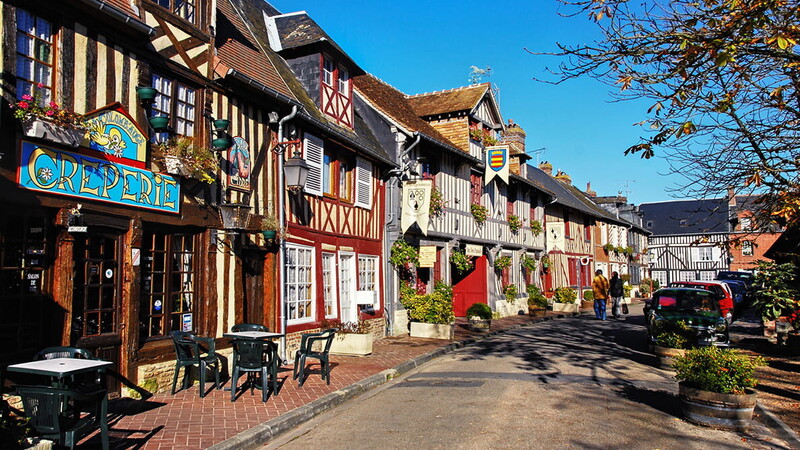
It wouldn't be a trip to Normandy without a visit to the iconic Mont-Saint-Michel. Depending on your starting point, you can reach the abbey by taking various provincial roads that will allow you to discover charming Mediaeval villages. In this case, it's important to remember that the car must be left in a designated area, and then you continue on foot with a walk of about 35-40 minutes, or by taking a dedicated shuttle. To witness the famous phenomenon of the high tide – which transforms Mont-Saint-Michel into an island in just a few hours – it's a good idea to consult the official website for precise times and dates. But for those who want to be amazed by stunning natural landscapes, there are also the cliffs of Étretat: on a sunny day, the white cliffs will dazzle you with the sound of the ocean crashing in the background. Taking the D940 road, you can also stop at Fécamp famous for its historic port and the museum dedicated to Bénédictine liqueur, or Veules-les-Roses, considered one of the most beautiful villages in France, or even Dieppe, an elegant seaside town dominated by a 15th-Century castle overlooking the sea.
The best way to delve into the true soul of Normandy is to prefer the regional roads – recognisable by the letter "D" followed by a number – as they are often scenic and less busy. Among the most beloved by drivers are the D562, the D911with numerous curves or elevation changes for those who want to test their sporty driving skills, or the D677, narrow and winding for those who want to drive calmly and enjoy the surrounding landscape. Additionally, parking is often available near major points of interest or tourist sites (paid only at the most popular locations, like Mont-Saint-Michel) where you can leave your car and continue on foot to explore or savour the local cuisine. Therefore, your car will be your best possible ally on your trip to Normandy.

